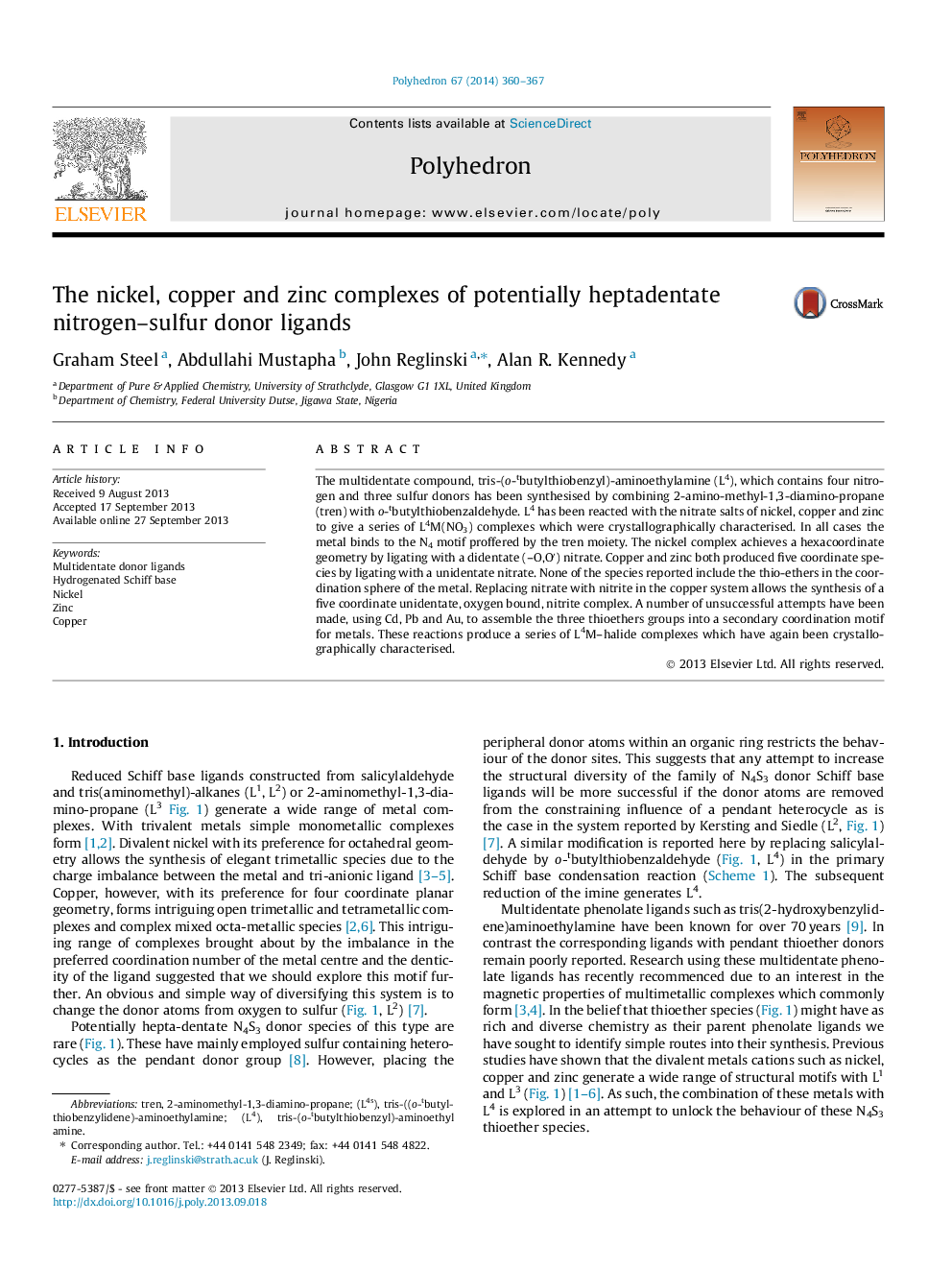| کد مقاله | کد نشریه | سال انتشار | مقاله انگلیسی | نسخه تمام متن |
|---|---|---|---|---|
| 1335490 | 1500272 | 2014 | 8 صفحه PDF | دانلود رایگان |
The multidentate compound, tris-(o-tbutylthiobenzyl)-aminoethylamine (L4), which contains four nitrogen and three sulfur donors has been synthesised by combining 2-amino-methyl-1,3-diamino-propane (tren) with o-tbutylthiobenzaldehyde. L4 has been reacted with the nitrate salts of nickel, copper and zinc to give a series of L4M(NO3) complexes which were crystallographically characterised. In all cases the metal binds to the N4 motif proffered by the tren moiety. The nickel complex achieves a hexacoordinate geometry by ligating with a didentate (–O,O′) nitrate. Copper and zinc both produced five coordinate species by ligating with a unidentate nitrate. None of the species reported include the thio-ethers in the coordination sphere of the metal. Replacing nitrate with nitrite in the copper system allows the synthesis of a five coordinate unidentate, oxygen bound, nitrite complex. A number of unsuccessful attempts have been made, using Cd, Pb and Au, to assemble the three thioethers groups into a secondary coordination motif for metals. These reactions produce a series of L4M–halide complexes which have again been crystallographically characterised.
A multidentate ligand (L) which potentially contains four nitrogen and three sulfur donors has been synthesised. L has been reacted with the nitrates of nickel, copper and zinc to give a series of L4M(NO3) complexes. The nickel complex is six coordinate and both the copper and zinc are five coordinate. The nitrate was replaced by halide and nitrite in the copper system giving rise to a series of simple complexes.Figure optionsDownload as PowerPoint slide
Journal: Polyhedron - Volume 67, 8 January 2014, Pages 360–367
